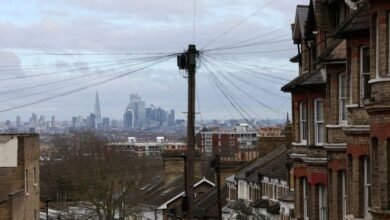7% Mortgage Rates Slam Buyers, Experts Predict No Relief

The American dream of homeownership has transformed into a frustrating hurdle race in 2024. Aspiring buyers face a grueling obstacle course of skyrocketing housing prices and sky-high mortgage rates, forcing many to abandon their ambitions. And according to the housing experts at Freddie Mac, there’s no foreseeable light at the end of the tunnel.
“Get ready for continued high mortgage rates for most of 2024,” Freddie Mac cautioned in a recent housing outlook report. “While these substantial interest rates will likely prompt potential buyers to adjust their homebuying expectations, we still anticipate strong housing demand due to favorable demographics, particularly among first-time homebuyers.”
The situation is particularly concerning because 30-year fixed mortgage rates are currently perched above 7%, nearing a two-decade high. With inflation showing no signs of relenting, the Federal Reserve is poised to maintain its current stance of holding off on reducing its benchmark interest rate. In fact, Freddie Mac predicts only a single rate cut by the central bank this year, and that won’t happen until much later in 2024.
Mortgage Rates: No Relief in Sight – Predictions
The Federal Reserve has been clear in its approach: they’d rather keep rates high until inflation cools down to a manageable 2%. This cautious strategy aims to prevent inadvertently triggering another round of price surges. The unfortunate consequence, however, is that borrowers across the board are stuck with significantly steeper loan costs, impacting everything from credit cards to mortgages.
Rising mortgage rates aren’t the only hurdle for aspiring homeowners, especially those in lower and middle-income brackets. Tight housing inventory and ever-increasing home prices are pushing many out of the market entirely. The median U.S. home sale price has reached a record-breaking high of $383,725 according to Redfin.
The cost of homeownership has become so astronomical that, according to Zillow, a six-figure income is now required to afford the typical American home. This marks the first time in roughly two years that home prices haven’t dipped in any major metro area across the nation, as reported by Redfin.
Mortgage Rates: Impact on Current Homeowners – A Ripple Effect
The impact of higher mortgage rates isn’t confined to potential buyers. Many current homeowners are also feeling the pinch. A significant number locked in mortgages with rates below 3% during the early stages of the pandemic. This makes them hesitant to sell their properties, fearing they’ll be forced to take on a new mortgage at today’s much higher rates.
This seller hesitancy, coupled with new construction failing to keep pace with housing demand, has created a nationwide shortage of both existing and new homes for sale. As Freddie Mac explains, “Overall, tight inventory and stubbornly high mortgage rates are significant roadblocks to home sales. Rates exceeding 7% continue to sideline many potential buyers, while sellers have less incentive to list their homes.”
This complex situation in the housing market presents a multifaceted challenge. While demographics suggest continued demand, particularly among first-time homebuyers, affordability has become a major hurdle. Until mortgage rates fall and housing inventory increases, the American dream of homeownership may remain just that – a dream – for many.
Beyond the immediate impact on homeownership rates, these factors have cascading effects throughout the economy. The housing market is a significant driver of economic activity, and a slowdown in sales can ripple outward, impacting everything from construction materials to furniture sales. Additionally, with many Americans locked out of the housing market, their ability to build wealth through homeownership is hampered.
So, what can be done to address this situation? Unfortunately, there are no easy solutions. The Federal Reserve’s focus on combating inflation through higher interest rates is necessary in the long run, but it creates short-term challenges for the housing market. Potential solutions may lie in government programs designed to increase housing inventory and assist first-time homebuyers with down payments or closing costs. Ultimately, navigating this complex situation will require a multi-faceted approach that addresses both short-term affordability issues and long-term economic stability.
RELATED POSTS:
Mortgage Rates Predictions 2024: Will Rates Go Down?
Mortgage Rate Predictions for Next 3 Years: Double Digit Rise
Mortgage Rate Predictions for Next 5 Years
Mortgage Rate Predictions for the Next 2 Months
Will Mortgage Rates Go Below 7% in 2024? Latest Predictions
Mortgage Rates HIT NEW LOW: Predictions &: What it Means for You





